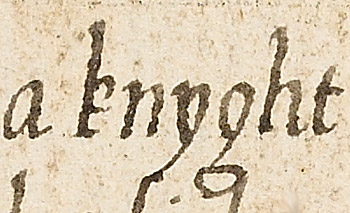Siege of Milan
General Information
Plot Summary

The Sultan Arabas is waging war on Christendom. After ravaging Rome and Tuscany, he travels to Lombardy, where he places pagan statues in churches and besieges Milan. Alantyne, lord of the city, dreams that an angel tells him to ask Charles, king of France, for help. He immediately travels to the court, where another angel has told Charles to fight for Milan. Bishop Turpin begins to rally Charles’ armies, but the treacherous Ganelon persuades the king that it would be better to send his nephew, Roland.
When Roland’s army arrives in Lombardy, they fare badly. Despite their valiant efforts, the Saracens kill over 40,000 Christians, including Alantyne, and capture Oliver, Gawter, Guy and Roland. When these knights are brought before the Sultan, they refuse to convert and continue to proclaim the Christian faith. Stating that their God is powerless, Arabas has a wooden cross thrown on a fire, but it does not burn. When the Saracens add brimstone, the cross sends out a miraculous flame which blinds and paralyzes them. The Christian knights kill Arabas and make their escape.
On their return to France they go to Saint-Denis, where the bells ring miraculously. Turpin meets them there and, on hearing the bad news, flies into a rage and curses Mary. Ganelon advises Charles to pay homage to the Saracens, but Turpin tells him to fight, and assembles an army of clergymen. When Ganelon persuades Charles to send the priests into battle and remain in France, the bishop calls the King a coward and excommunicates him. Threatening to kill anyone who thwarts him, Turpin prepares his army to attack Paris. Eventually Charles repents, is absolved, and joins his army with Turpin’s.
The French troops arrive in Lombardy, where the Saracens have crowned Arabas’ brother Garcy in a lavish ceremony. Turpin sets up an altar on the site of the previous battle and says a mass, for which God miraculously supplies the bread and wine. The Saracens also perform religious services and the two hosts meet. Many die, but the Christians fight bravely, as Turpin spurs them on. Charles refuses Roland’s offer to take his place again and enters the fray, killing the Sultan’s champion Sir Darnadowse after a gruelling skirmish. Turpin is badly wounded, but the Christian troops eventually drive the Saracens into Milan. Turpin will not let his wound be treated, and vows to fast until the city falls.
As the siege continues, the Christian troops stand in pools of their own blood. Finally, the Saracens emerge and another vicious battle ensues. Turpin is wounded again, this time by a spear, but carries on fighting until the Christians retreat. He continues to fast as the Saracens attack again [and Christian attempts to send for reinforcements are thwarted.] The bishop urges the beleaguered troops on, until the Duke of Brittany arrives with a fresh army. They join the battle and, despite being heavily outnumbered, defeat Saracen reinforcements while Roland and Charlemagne hold the others in the city. Charles and his men weep for the bishop who is rapidly growing weaker, but prepare to renew their attacks on Milan. [The poem is incomplete.]
From: M. Mills, Six Middle English Romances. London: J.M. Dent & Sons for Everyman, 1992.
Manuscript: London, British Library, MS Additional 31042
Manuscripts
Click a title below to search for all romances in that manuscript.